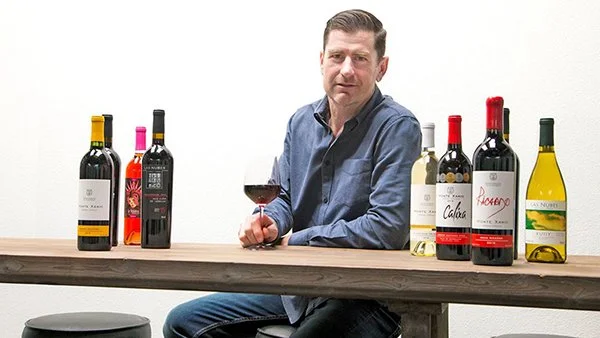Costa Mesa entrepreneur imports Baja wines to Orange County
Jim Riley’s love affair with the Baja peninsula began as a teenage surfer, driving down from his Orange County haunts to catch the famed waves along the “lower” portion of what was once greater Mexican California.
Riley’s appreciation for the peninsula — which extends from the U.S. border at Tijuana 1,000 miles south to Cabo San Lucas — only grew during his south-of-the-border trips to race off-road vehicles.
While continuing to pursue both hobbies as an adult, Riley, a veteran of the tequila business, became keenly aware of the Baja peninsula’s booming wine region.
“What people don’t know about Baja, even Southern Californians, is that the wine-growing region is only an hour south of our border,” Riley said by phone from his office at the Costa Mesa-based Baja United Group, which brings Mexican wines into the U.S. for distribution. “So if you live in San Diego, you’re in [Mexico’s] wine country within an hour.”
Indeed, Southern Californians have enjoyed a glut of wine-producing real estate thanks to Temecula and Santa Ynez, but Riley believes that the future of viticulture lies below San Ysidro — a future that in fact began with the history of Spanish colonization.
“If you chase the roots of grapes being grown in Baja, you have to think about the Catholic Church — bringing grapes over to Mexico to produce wine for Communion during the 16th century,” Riley said.
Today Valle de Guadalupe — the grape-growing region near Ensenada — is host to dozens of wineries, including Monte Xanic, one of Mexico’s national wine brands. The arid climate combined with cool breezes blowing in off All Saints Bay makes the region ideal for growing grapes.
Riley first caught wind of the vineyards while still focusing on the spirits industry, where he worked with Ketel One vodka and formed his own tequila brand, Azunia.
“I’ve been in this business for a very long time, so it wasn’t uncommon for people to tell me about the Valle de Guadalupe; I just never went,” he said.
But after leaving the tequila sector, Riley said that within two weeks his friend Eric Morley, owner of Blue C Advertising — also based in Costa Mesa — convinced him to make the trip to visit some of the premier Ensenada wineries like Santo Tomas, El Cielo and Monte Xanic.
“These names [may] mean nothing to you today [but] these are big places,” Riley said.
It was over a glass at El Cielo that Morley first proposed bringing Valle de Guadalupe vintages north into Alta California.
“He said, ‘Jim, I’ve got this vision, and I know with your tequila company, you know how to import from Mexico,'” Riley recalled. “I said, ‘OK, let me think about it.'”
Riley wanted to give back to the peninsula that had been so good to him both as a tequila importer and as an off-road driver and surfing enthusiast.
He told Morley that they needed to create a sustainable business to donate to the orphanages since they had longstanding histories of helping the peninsula’s orphans long before they started to work with vintners.
“The challenge for us as [off-road] racers is we only go down there once or twice a year to race, and we’re only supporting the orphanages at those specific times,” Riley said. “That support might last a couple of months, but we get emails throughout the year of things they need and challenges they [face], and I thought this could be an opportunity for us to give them a sustainable income on a monthly basis.”
Riley said the mission resonated well with the wineries, which were happy to support a worthy cause while simultaneously getting their bottles north of the border.
However, breaking into the U.S. market would be no easy task —particularly in the Golden State, which has been the vanguard for American oenophiles since Napa’s renaissance in the 1970s.
But as with selling any other product, Riley believed, it all came down to marketing.
“One of the things I spoke to [the vintners] about, because I had the opportunity to build a couple brands like Ketel One [in the U.S.], is it’s all about having a strategy,” he said. “If you want to be in the United States, what does that look like to you? How much are you willing to send up? Let’s present that up north.”
Riley reached out to marketing colleagues to help spread the gospel of Mexican wines. The Mexican government too has joined the crusade, with a “Vinos de Mexico” promotional push to commence in 2019.
It’s slow, difficult work, but getting some key yeses is helping the cause, Riley said.
Riley now retails Mexican wines in Hi-Time in Costa Mesa, as well as Orange County outlets such as Javier’s, Vons and Pavilions, and in Costco in San Diego County.
Napa’s French Laundry, one of the country’s most prestigious restaurants, now carries a Monte Xanic Viña Kristel Sauvignon Blanc. While that particular bottle isn’t one that Riley’s company sells in the U.S., it’s proof, he says, that Valle de Guadalupe wines are getting serious recognition here.
“When you see the infrastructure of the wineries, we’re talking about hundreds of acres of grape hills,” Riley said of the Baja vineyards. “You tell the story of Baja and educate [consumers] in terms of what’s happening down there.”
Riley said SoCal residents curious to sample Valle de Guadalupe wines should make the two-hour drive to Ensenada to see the magic for themselves — his company also offers VIP tours to the region.
“I’ve always believed in the motto of just saying, ‘Yes,’ not only to life and family, but also in business,” Riley said, adding that his decision to join forces with Morley, now his chief marketing officer, is paying off not only for the vintners and for Baja United, but also for the Mexican orphans he wished to assist.
“Baja wines are on the rise,” Riley said, “and eventually everybody is going to need [them] on their menus.”
Click Here for Original LA Times Article

